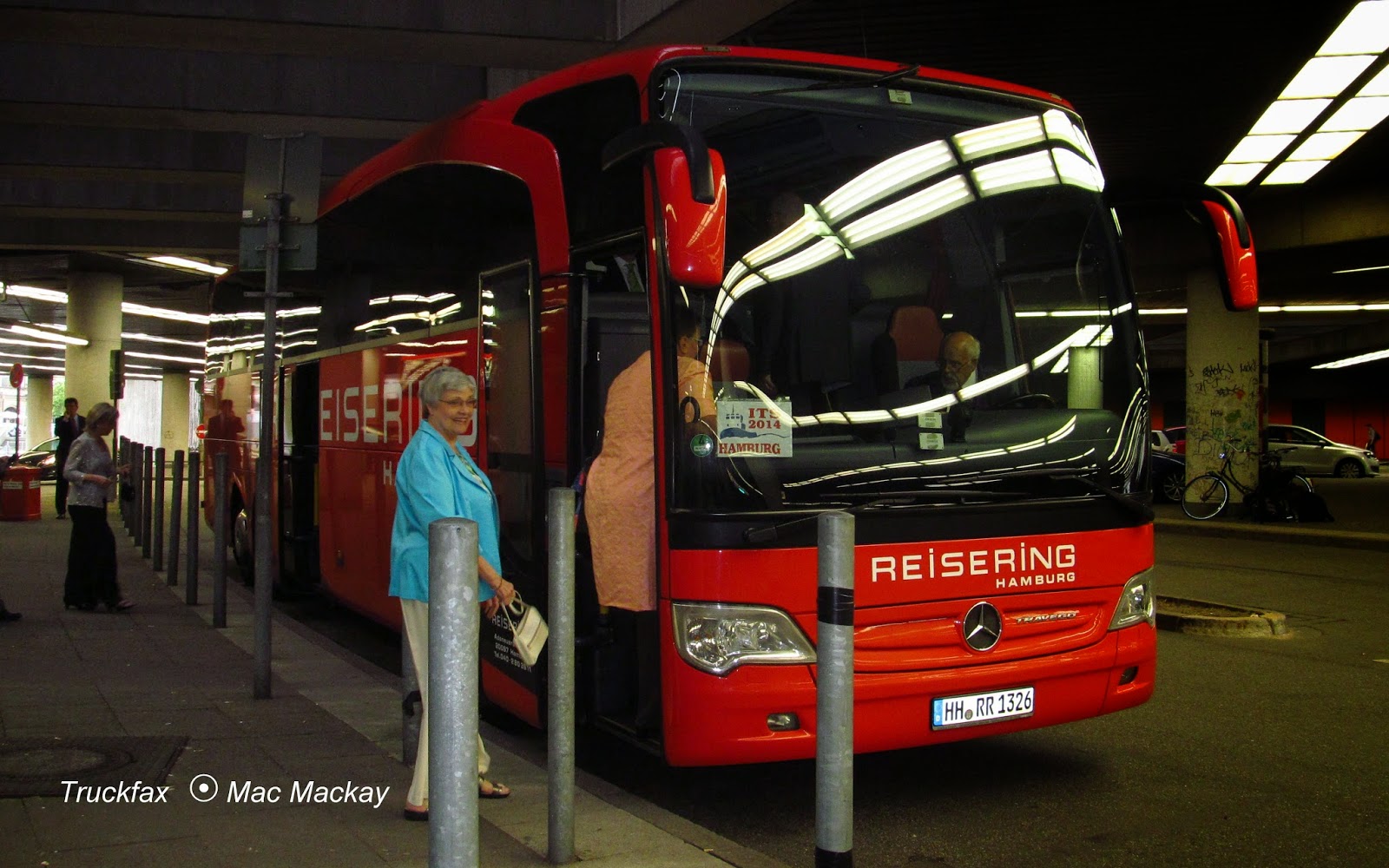Some trucks are drive on drive off, but operators Bay Ferries Ltd also provide a drop trailer service. On this particular day Armour Transportation had several trailers to go, and the terminal had its two yard shunters ready to run them onto the ferry (and haul off any coming in from Saint John).
Number 1 shunter was a pretty standard looking raised roof Ottawa, but Number 5 (not an Ottawa- but it had no discernible markings) was anything but standard looking.
Number 5's driver, pedal to the metal, roars off to work, setting a Digby acceleration record, despite wielding an aerodynamically challenging snow plow. One of Armour's drop tractors awaits the arrival of new loads.
#5 made extraordinarily fast work of placing support trestles under the waiting drop trailers' king pins. The trailer's own dolly wheels are far too flimsy to withstand the rolling and pitching of the ferry, and these heavy stanchions are anchored to the ship's deck during the crossing to stabilize the trailers.
After a Don Garlitts run back through the yard, the driver makes a Mario Andretti turn into his parking slot - snow plow intact (and unneeded), but leaving a bit of rubber on the track (er ... sorry, roadway).
It was July 25, so like Christmas lights that still adorn some houses by July 25, it is safe to guess that the plow will remain onboard until next winter. Perhaps it works as a counterweight or, based on the operating speed, maybe it is a ground effects air dam.
.











































